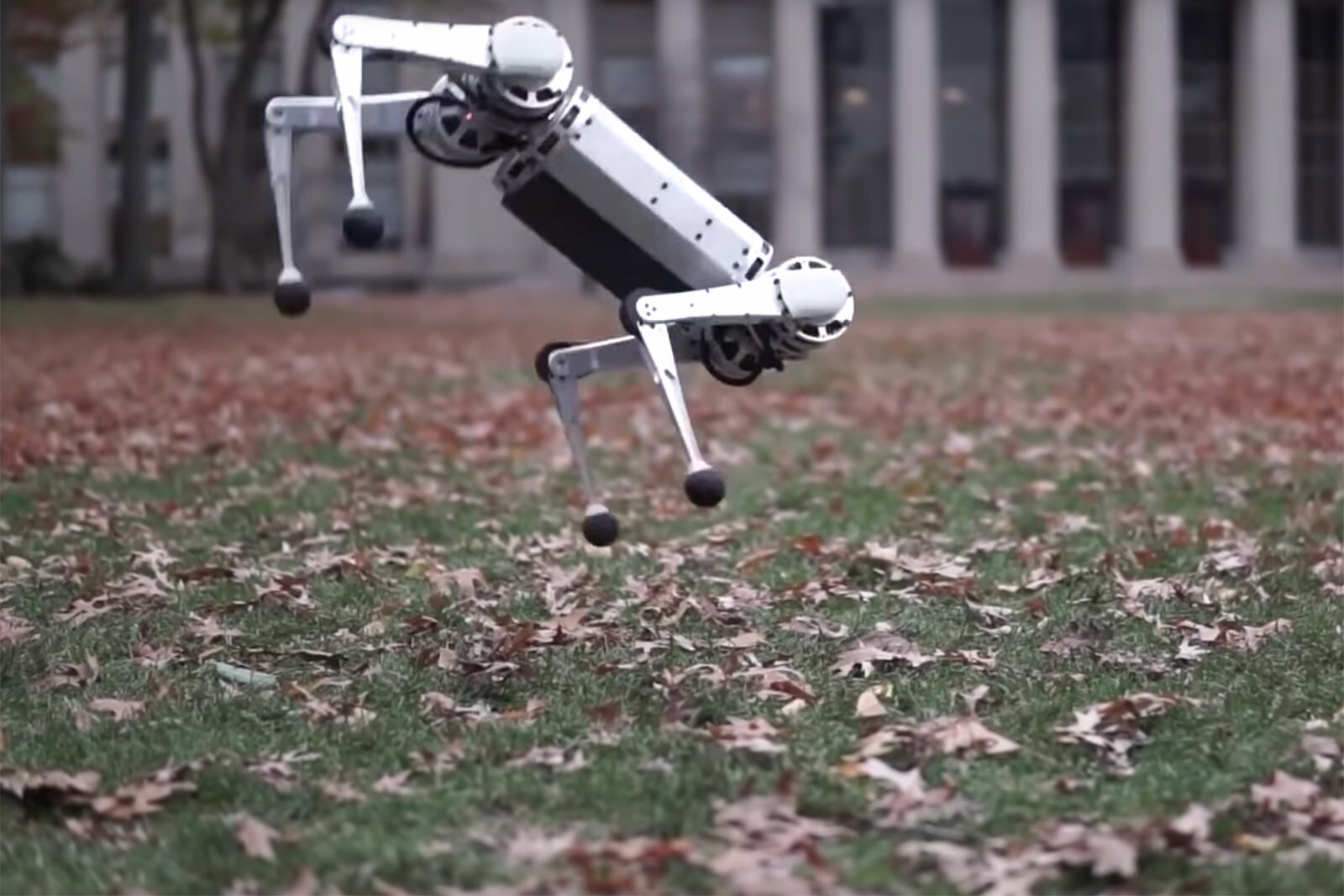
On November 10, 2019, nine agile mini cheetah robots, built by researchers at the Massachusetts Institute of Technology (MIT), were let off their leash to demonstrate their superior athletic abilities. The four-legged machines, controlled by their human creators, began with a warm-up run across the field in full formation. They then took turns maneuvering a soccer ball. As often happens in games, a couple of the team members got into a skirmish and jostled with each other until they both fell onto their backs. Fortunately, they reconciled for the grand finale — a perfectly synchronized backflip, one that would make even a world-class gymnast like Simone Biles proud!
First unveiled in March 2019, the robots are mini versions of the larger and heavier Cheetah 3, which was introduced in 2014. The inventors at MIT's Biomimetics Robotics department say though they may resemble their predecessors, the new four-legged machines are much more resilient and "virtually indestructible." Weighing in at just 20 pounds (9 kilograms), the limber robots can bend and swing their legs wide, giving them the ability to walk either right-side-up or upside down. They can also traverse through uneven terrain at about twice the speed of an average person's walking pace. As showcased on November 10, the machines can quickly right themselves if kicked to the ground and perform incredible 360-degree backflips from a standing position.

Unlike the Cheetah 3, the mini robots are built using cheap, easy to find, modular parts. This means that if a limb or motor breaks, it can be easily replaced using off-shelf parts. “In Cheetah 3, everything is super integrated, so if you want to change something, you have to do a ton of redesign,” says lead developer Benjamin Katz. “Whereas with the mini cheetah, if you wanted to add another arm, you could just add three or four more of these modular motors." He adds, "You could put these parts together, almost like Legos."
The team, which currently has ten of the four-legged machines, plans to build additional units and loan them, in sets of ten, to other university robotic labs. “A big part of why we built this robot is that it makes it so easy to experiment and just try crazy things, because the robot is super robust and doesn’t break easily, and if it does break, it’s easy and not very expensive to fix,” says Katz.

He believes this will enable other engineers to teach the robots different skills. “Eventually, I’m hoping we could have a robotic dog race through an obstacle course, where each team controls a mini cheetah with different algorithms, and we can see which strategy is more effective,” Katz says. “That’s how you accelerate research.”
The MIT team's reason for developing the robots extends beyond entertainment. They hope that some day packs of "cheetahs" will assist first responders with search and recovery missions following natural disasters like earthquakes and tornadoes, work alongside firefighters, and even respond to military emergencies.
Resources: news.mit.edu, newatlas.com
